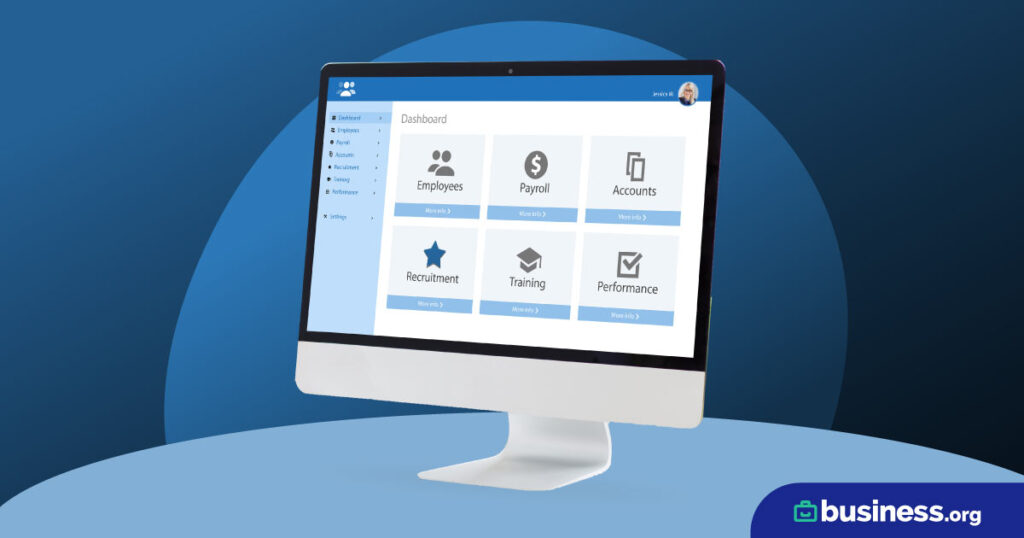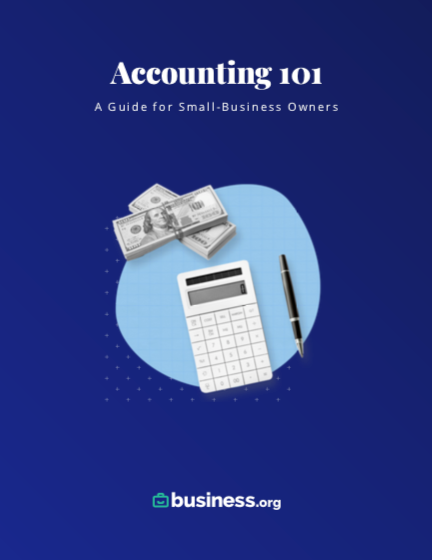We are committed to sharing unbiased reviews. Some of the links on our site are from our partners who compensate us. Read our editorial guidelines and advertising disclosure.
Why Cash Flow Is Important for Your Small Businesses
Cash flow refers to the amount of cash flowing in and out of your business over a specific period of time. Ideally, your business has a steady stream of incoming cash, or positive cash flow. If you're losing more cash than you're bringing in, however, you have negative cash flow — and that's a huge warning sign that your business is heading toward failure.
We'll cover what cash flow is, how to measure cash flow, and what cash flow can tell you about your business's health.
By signing up I agree to the Terms of Use and Privacy Policy.
What is cash flow?
When you have positive cash flow, you're making enough money to cover your bills and even reinvest in your business, expanding operations and hiring new employees. You're depositing money into your bank account and can make withdrawals without worrying you'll overdraft your account.
When you have negative cash flow, you aren't making enough money to cover the cost of your operations. Your business, friend, is on its way out, unless you can manage your cash flow and figure out how to make more than you're spending.
Put another way, if your business is a body, cash is the oxygen. When cash moves in and out of your company at a healthy rate, that's a good indicator that your business is alive and kicking. If your business is bleeding cash, however, you'll soon find yourself below your break-even point and on the road to posting a going-out-of-business sign in your window.
Why does cash flow matter?
Cash flow can be an even more important measure of your business' health and eventual success than your revenue or profit.
Why? Because without cash, you can't pay your bills. You can't purchase inventory, you can't pay rent, and you definitely can't afford to invest in your business's future. Most importantly, without a positive inflow of cash, you literally can't sustain day-to-day business operations. You need money in the bank to make purchases that keep your business afloat and help you avoid unnecessary debt.
Types of cash flow
There are three main areas where cash can flow into or out of your business: operating activities, investing activities, and financing activities.
Cash flow from operating activities (CFO)
Cash flow from operating activities refers to cash flow from everyday business operations, such as the following:
- Sales of goods or services
- Employee wages
- Supplier payments
- Income tax payments
For example, imagine you own a small bakery. Every donut you sell and catering contract you sign represents cash flowing into your business from operating activities. In contrast, paying the company that supplies your flour represents cash flowing out of your business.
That outward flow isn't a bad thing. It might sound cliché at best and nonsensical at worst, but you really do need to spend money to make money, and hiring employees and paying suppliers is crucial for your business to run smoothly. You just need to counterbalance that output with a steady influx of cash, hopefully from both operating activities and the two other types of cash flow.
By signing up I agree to the Terms of Use and Privacy Policy.
Cash flow from investing activities (CFI)
Cash flow from investing activities means cash flow to and from long-term investments. This could mean literal stock investments, but for many small business owners, it's more likely to mean an investment in a piece of heavy equipment (like an industrial fridge) or property for your expanding bakery franchise.
Cash flow from investing activities can include capital expenditures, or CapEx. Capital expenditures refer to the cash you invest in physical, fixed assets, like upgrading the electrical system in a warehouse you already own. Even though you're putting money into a project, the expense isn't necessarily a liability—it's an investment in your future that you expect to yield dividends.
In contrast, operating expenses, or OpEx, represent short-term payments that keep your business on its feet day to day.
Cash flow from financing activities (CFF)
Cash flow from financing activities refers to money you spend and earn funding your business. In other words, it's the money that flows between your business and the people and entities who invested in it, like banks or shareholders. Debt payments, stock issuance, and dividend payments to shareholders are some of the key components of cash flow from financing activities.
What are cash flow statements?
The best way to track how much cash is moving in and out of your business bank account is by using a cash flow statement. A cash flow statement lists your sources of cash, breaks them down by the type of cash activity (operating, investing, or financing activity) and the transaction date.
As a business owner, you should check your cash inflow and outflow by drawing up a cash flow statement frequently. For one thing, this will help you stay on top of how much money is in your business bank accounts so you don't accidentally overdraw.
For another, a cash flow statement shows you what you're spending money on and which business activities bring in the most revenue. Using that info, you can figure out where to cut back and where to invest more so you can maximize profit and stay in business.
If your business uses accrual-basis accounting instead of cash-basis, you'll need to frequently compare the profit on your income statement to the actual cash inflow and outflow on your statement of cash flows. Otherwise, if you list a payment when you finish a project but don't get paid immediately, you might accidentally spend money you don't have.
Cash flow statements are one of the key documents investors look at when deciding to finance your business or not. Put alongside the profit and loss (income) statement and balance sheet, the cash flow statement reveals the state of your business, which in turn helps investors decide if they trust you with their money.
Types of cash flow statements
There are two main types of cash flow statements: direct statements and indirect statements.
Direct cash flow statements
Direct cash flow statements are the simplest cash flow statements. These statements only show your physical cash transactions and don't list your net income at the top of the sheet. Instead, these statements just list each cash transaction in order by date.
You can get away with using direct cash flow statements if you use cash-basis accounting to keep your books. Even then, you should only be using a direct cash flow statement if you're a freelancer who works a few projects a month. If you have a more complicated system of income and expenses, an indirect cash flow statement will be more useful and more accurate for you.
Indirect cash flow statements
Indirect cash flow statements list more than just your physical cash transactions. They also include your non-cash assets like real estate, office equipment, and other non-cash assets you could liquidate in case of bankruptcy. Finally, they show your non-cash liabilities like debt payments and bills.
By showing you the bigger picture, an indirect cash flow statement gives you a more accurate look at how much working cash you have. Additionally, if you use accrual-basis accounting, the IRS requires you to use indirect cash flow statements.
How to create a cash flow statement
There are three main ways to create a cash flow statement:
- Drawing one up by hand using spreadsheet software
- Generating one with your bookkeeping or accounting software
- Working with an accountant, bookkeeper, CPA, or other financial professional
Spreadsheet software, especially a template from a free spreadsheet provider like Google Sheets, is the cheapest way to generate a cash flow statement. It's also the one most prone to error—since you're editing all the data by hand, it's easier to slip up and enter a digit wrong, which can throw off your entire cash flow data.
Bookkeeping and accounting software programs that use accrual-basis accounting should always have built-in cash flow sheet generators. Typically, to create one using your accounting software, you'll just set the date parameters for the cash flow data you want to look at. In the click of a button, the software should spit out a handy statement that you can peruse yourself or take to an accountant for advice.
The most expensive way to generate a cash flow statement is by hiring an accountant or bookkeeper. However, if your business is fairly large and complex, you probably need an accountant's expert guidance to ensure your business is on track for success. Even if you have a smaller, less complex business, it's still wise to consult with a financial advisor (especially during tax time so you can file your small business taxes correctly).
If you don't want to pay for accounting software, most free accounting software still draw up cash flow statements. Most notably, Wave Accounting is a fully featured and free-for-life bookkeeping solution that syncs with your books and includes all of the most important financial documents for small businesses.
Compare top picks for business accounting software
Data as of 3/9/23. Offers and availability may vary by location and are subject to change.
*Only available for businesses with an annual revenue beneath $50K USD
**Current offer: 90% off for 3 mos. or 30-day free trial
†Current offer: 50% off for three months or 30-day free trial
‡Current offer: 75% off for 3 mos. Available for new customers only
The takeaway
In the small business world, cash really is king. An overall positive cash flow indicates that your business is primed for success—so keep those cash influxes coming. If you don't have positive cash flow yet, throw together a cash flow statement to see where you can cut back and how to bring your business back in the black.
Want help from an accountant who can draw up and analyze a new statement of cash flows? Scan our favorite virtual and outsourced accounting services for small businesses.
Disclaimer
At Business.org, our research is meant to offer general product and service recommendations. We don't guarantee that our suggestions will work best for each individual or business, so consider your unique needs when choosing products and services.
1. QuickBooks, "Small business payments and cash flow in 2021: How to manage money in the post-pandemic economy." May 27, 2021. Accessed October 26, 2022.






